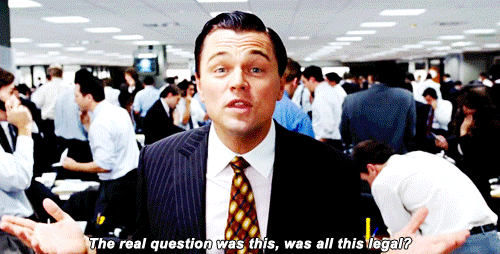Bloggers and meme-fanatics alike will admit that very few things can convey emotion like an animated GIF, and with almost 23 million GIFs posted to Tumblr everyday, it’s needless to say that the internet has become obsessed with the file format.
According to Mike Isaac at NY Times, “[GIFs] have become a mainstream form of digital expression, a way to relay complex feelings and thoughts in ways beyond words and even photographs, making them hugely popular with young audiences who never leave home without their smartphones.” Sites like Buzzfeed have built content marketing empires by using animated GIFs. Their small file sizes make them easily shareable and developers are getting the message; social giants Twitter, Facebook and Tumblr have all integrated GIF search capabilities into their mobile apps and messaging platforms.
Animated GIFs have become so popular, that even politicians are getting in on the fun. Last year, the House Judiciary Committee published a listicle (or “gifsticle”) about President Obama’s immigration policies, complete with GIFs from films like Pitch Perfect and The Little Mermaid. Pundits debated whether this appeal to the youth demographic was unbecoming of an official legislative body. But as The Wolf of Wall Street said…
Image credit: Paramount Pictures
The answer to that question is murky…
GIFs and Copyright Law
The trouble lies in using someone else’s original content to create and share a GIF. This usage undermines the copyright owner’s ability to control derivatives of their work, where or how their work is shared, and their right to receive proceeds.
Individuals often make and share GIFs with little concern about repercussions, but companies — and legislative bodies — need to be aware of copyright restrictions. According to Peter Van Valkenburgh, “As of October 2013, there is no US case that definitively states whether creating a GIF made from copyrighted material is or isn’t copyright infringement.” Because of this, whether or not usage of a GIF is legal depends on whether or not that usage falls under the doctrine of ‘fair use’.
Fair use is determined not only by the nature of the GIF, but also by who created it, and its intended purpose. Generally, something is considered fair use when the original material is used for a limited and “transformative” purpose, such as commentary, criticism or parody. According to Attorney Rich Stim, the judges and lawmakers who created the fair use exception did not want to limit its definition. “Like free speech, they wanted it to have an expansive meaning that could be open to interpretation.”
Since there is no standing legal decision on whether or not specifically creating a GIF from copyrighted material is technically infringement, these four factors are all taken into account when determining fair use:
1. The purpose and character of the use, including whether such use is of a commercial nature or is for nonprofit or educational purposes
2. The nature of the copyrighted work
3. The amount and substantiality of the portion used in relation to the copyrighted work as a whole
4. The effect of the use upon the potential market for or value of the copyrighted work.
So the doctrine of fair use creates a legal opening for copyrighted material to be remixed and repurposed, as long as the new use is derivative of the original and does not create economic competition for the copyright holders.
GIFs with Famous Faces
This notion of fair use becomes even more complex when a GIF features celebrities. According to Adweek: “…the only way to post an animated GIF of a celebrity on your business page without risking legal trouble would be to get the permission of everyone featured in the clip, the copyright holder of the original recording and (just to be safe) the person who actually made the GIF.” In absence of such permissions, content sharers always risk receiving a cease and desist order from original creators and/or artists’ management.
The debate about GIF usage and intellectual property is especially prominent in the sports world. When sports blogs, such as Deadspin and SB Nation, create GIFs out of highlights from professional games, it creates complications for the leagues and the television networks that pay hefty licensing fees to broadcast those games in the first place. Some leagues, including the NFL and MLB, maintain relationships with sports GIF publishers, allowing them to evaluate copyright infringement complaints on a case-by-case basis and invoke fair use when they believe it applies. Other leagues, such as FIFA, strictly enforce a zero tolerance, no-GIF policy.
Despite the absence of any legal decision, social media networks have already adopted measures to protect themselves while owners of copyrights attempt to counter the spread of their content. The Digital Millennium Copyright Act ensures that social media sites who host GIFs are not held responsible as long as they have a system to report and remove content accused of copyright infringement.
Guidelines for GIFs and Fair Use
While the legal implications of GIFs are still being debated, I bet you’re wondering what this means for brands looking to use GIFs in their content marketing. As a general guideline, your best bet is to:
• Get written releases from the copyright holder and actors who appear in the GIF.
• Link to content that isn’t your own and let the site you link to deal with the liability.
• Make your own GIFs with your own original content, like the one you see above. That way people will need to ask YOU for permission to share.
Animated Copyright GIF created by Propoint Motion Designer Natalie Z.

